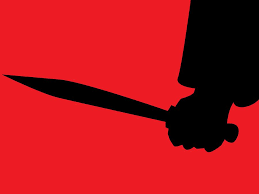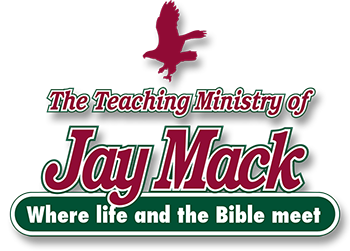Those Not Qualified to Flee to a City of Refuge
35: 9-21
Those not qualified to flee to a city of refuge DIG: What purpose did the cities of refuge serve? Describe what this parashah teaches about the difference between involuntary manslaughter and murder. Who judges the case of a potential murder? Who was to do the executing of a murderer? Why do you think so?
REFLECT: Cities of refuge were provided for the people of Isra’el. What refuge is provided for believers today? What are some of the problems with the “blood avenger” mode of justice? How did the mitzvot of the city of refuge circumvent those problems? How is Yeshua your safe place? How can He help you today?
The murderer must be put to death.
The concept of a redeemer (Hebrew: go’el) is found in the book of Ruth (see the commentary on Ruth, to see link click Aq – Ruth Gleans in the Field of Bo’az). A redeemer is one’s next of kin. The redeemer was responsible for: buying back a kinsman that has been sold into slavery (Leviticus 25:47-49), buying back a kinsman’s land that has been sold outside the tribal clan (Leviticus 25:25-31); settling legal affairs on behalf of a deceased kinsman (Numbers 5:8), begetting a son to the childless kinsman’s widow (Deuteronomy 25:5-10), and avenging a kinsman’s murder. The one responsible for the latter is referred to as the redeemer of the blood (Hebrew: go’el hadam). This person is chosen by the family and does not engage in revenge, but engages in the redemption of family loss.779
In order to truly understand the need for a “city of refuge,” we must first understand the Ancient Near Eastern institution of blood redemption. The redeemer of the blood was a vigilante system of justice. It was an institution of the Ancient Near East and not biblically mandated. When a person was killed, regardless of whether it was accidental or intentional, the redeemer of the blood set out to redeem the dead man. The redeemer might be a brother, father, uncle or cousin. In Second Samuel 14, a woman approached King David with a petition for special protection from a kinsman redeemer bent on vengeance. One son inadvertently murdered another, and the blood redeemer was bent on seeing justice fulfilled. The woman petitioned David so that the avenger of blood will not continue to destroy, otherwise they will destroy my son (see the commentary on the Life of David Dl – The Wise Woman of Tekoa).
The institution of the blood redeemer served to protect the life in the often savage and lawless world of the Ancient Near East. Though the Torah did not initiate the blood redemption system of justice, neither did it forbid it. A blood avenger was actually protected by law: If the next-of-kin avenger finds him outside the limits of his city of refuge, and the avenger kills the killer, he will not be guilty of the man’s blood (35:27). His act of retribution was not regarded as a murder. In the ancient world, murder and violence was probably deterred with the knowledge that there would always be someone coming after you for vengeance. However, there are obvious problems with this mode of vigilante justice. No distinction was made between intentional murder and involuntary manslaughter. There was no trial by jury. Witnesses were not allowed to be cross-examined. It was a nearly barbaric method of exacting revenge.780
Involuntary Manslaughter (35:9-12): ADONAI said to Moshe, “Tell the people of Isra’el, ‘When you cross the Jordan into the land of Canaan, you are to designate for yourselves cities that will be cities of refuge for you, to which anyone who kills someone unintentionally (Hebrew: bishgagah) can flee’ (35:9-11).” The person guilty of involuntary manslaughter acts in a reckless manner. Their actions are more than just a mere accident, and a death occurred that could have been prevented. The person who kills unintentionally must stay in his city of refuge until the death of the high priest. But after the death of the high priest the killer may return to the land he owns (35:22-29).
The mitzvot of the cities of refuge were introduced by the Torah in order to circumvent the vengeance of the avenger (go’el) of the blood. The city of refuge was a place where someone pursued by a blood avenger could find immunity until standing trial. It says: These cities are to be a refuge for you from the dead person’s next-of-kin, who might otherwise avenge his kinsman’s death by slaying the killer prior to his standing trial before the community (35:12). Normally, even if one was an eyewitness to a crime that merited the death penalty, vigilante justice was not an option. Every capital offense had to go through the due process of a trial. There were no lynchings or impulse-stonings. The one who witnessed a murder, an act of adultery, or a Sabbath violation, and then took the law into his own hands, killing the perpetrator, was regarded as a murderer and would have been sentenced as a murderer. However, the avenger of the blood seems to have been the exception to the rule. Regarding the blood avenger, the Torah says: If the next-of-kin avenger finds a killer outside the limits of his city of refuge, and the avenger kills the killer, he will not be guilty of the man’s blood (35:27).781
Cities of refuge (35:13-15): In regard to the cities you are to give, there are to be six cities of refuge for you (see Gk – Cities of Refuge). Three cities east of the Jordan and three cities in the land of Canaan will be cities of refuge. These six cities will serve as refuge for the people of Isra’el, as well as for the foreigner and resident alien with them; so that anyone who kills someone unintentionally may flee there.

Those who were not qualified to flee to cities of refuge (35:16-21): The cities of refuge were only for those guilty of manslaughter. These verses present various descriptions of the taking of a life that would indicate whether the person was guilty of manslaughter or murder. In contrast to the inordinately complicated system of modern law concerning criminal homicide – the provisions of this section are clear and direct. They are based on the notion of obvious intent. The manner of a person’s death would suggest willful intent or accidental demise. How would the elders know the difference? If a person was killed with a lethal instrument, the means of death seemed intentional and the guilt of the killer was presumed.782 If he hits him intentionally with an iron implement and thus causes his death, he is a murderer. The principle, repeated five times (including Ecclesiastes), is that the murderer must be put to death. This underlines the principle: Whoever sheds the blood of a man, by man shall his blood be shed; for in the image of God has God made man (for more on that see the commentary on Genesis Cz – Whoever Sheds Human Blood, by Humans Shall Their Blood Be Shed). Or if he hits him with a stone in his hand big enough to kill someone, and he dies, he is a murderer; the murderer must be put to death. Or if he hits him with a wood utensil in his hand capable of killing someone, and he dies, he is a murderer; the murderer must be put to death. The next-of-kin avenger is to put the murderer to death himself – upon meeting him, he is to put him to death (Ecclesiastes 8:11-13). The motives of the slayer’s intention would likewise determine if he was guilty or not. If he shoves him out of hatred; or intentionally throws something at him, causing his death; or out of hostility strikes him with his hand, so that he dies; then the one who struck him must be put to death; he is a murderer; and the next-of-kin, the avenger of the blood (Hebrew: go’el hadam) is to put the murderer to death upon meeting him. The avenger of the blood was given the legal authority to execute the murder. No thirty years of trial motions.
Dear Heavenly Father, Praise You that You are the refuge for believers today. You are always being just and fair. Righteousness and justice are the foundation of Your throne. Lovingkindness and truth go before You (Psalms 89:14). Thank You that just as You provided a refuge for the one who committed involuntary manslaughter, so You provide a refuge for all sinners who lovingly come to You as their Lord and Savior (Romans 10:9-11). Thank You for redeeming me so that Satan cannot prove me guilty of my sins, because there is not no condemnation for those in Messiah Yeshua (Romans 8:1). The Father sees Messiah’s righteousness when He looks at me, for the blood of Messiah Yeshua covers those sins. He made the One who knew no sin to become a sin offering on our behalf, so that in Him we might become the righteousness of God (Second Corinthians 5:21). Praise You for being such a wonderfully just and lovingly kind heavenly Father. In Messiah Yeshua’s holy Name and power of His resurrection. Amen



Leave A Comment